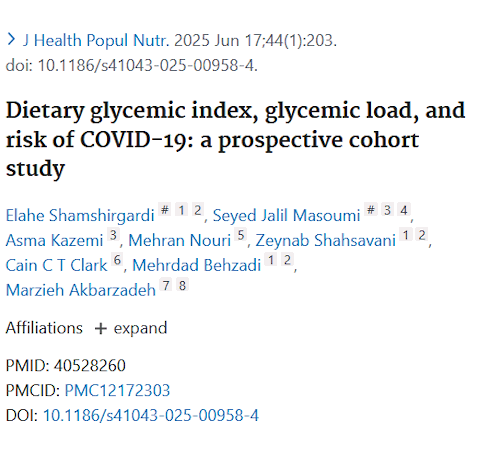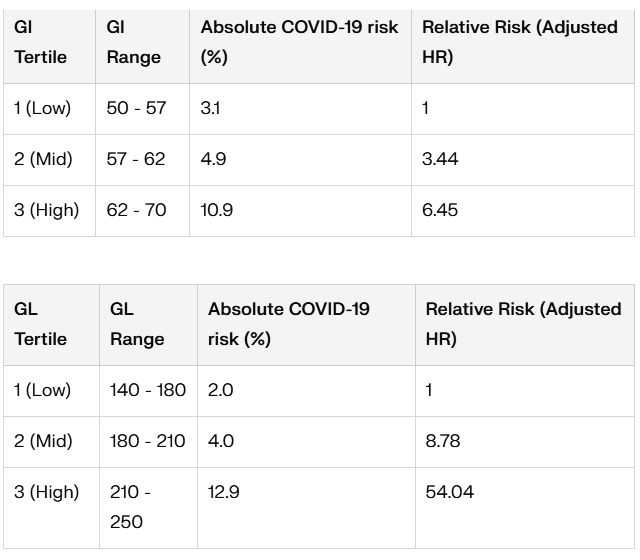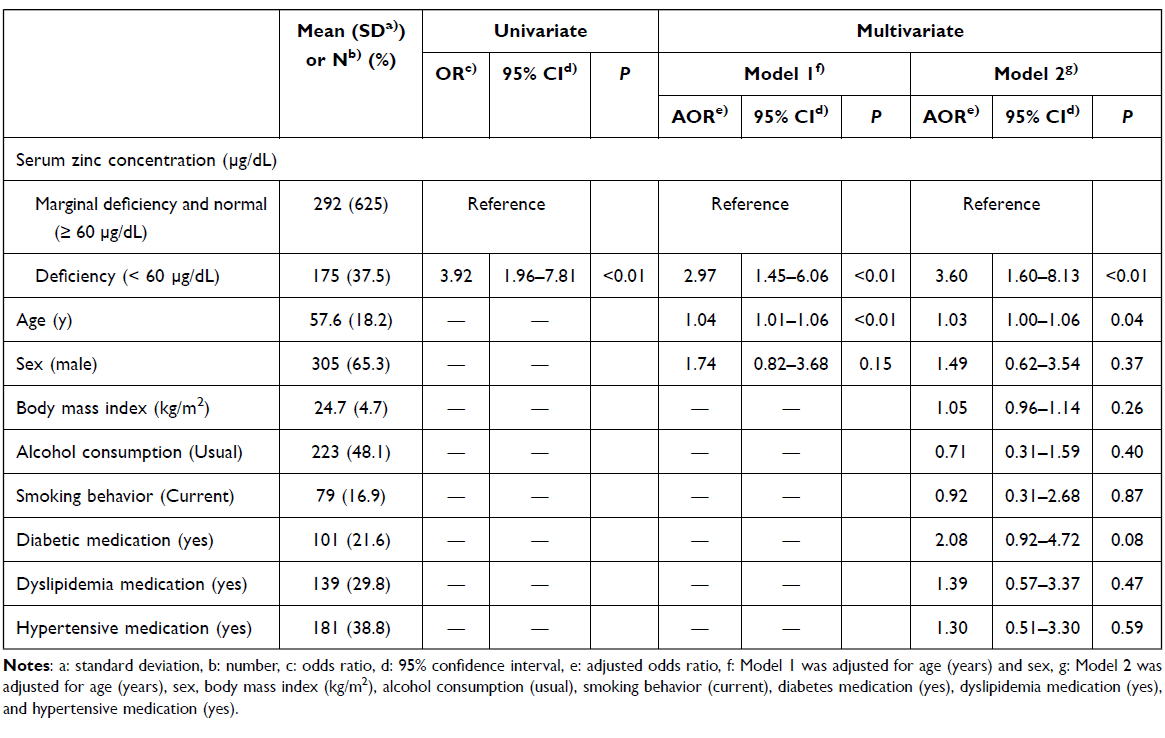Study
The researchers tracked which study participants developed cocvis-19 and which did not.
The researchers had an idea of the study participants' dietary patterns. They divided the study participants into three equal-sized groups (tertiles) based on glycemic index [GI] and glycemic load [GL]. The researchers then determined the risk of covid-19 for each tertile.
Results
The lower the glycemic index and glycemic load of a tertile, the lower its risk of covid-19. The group with the highest glycemic index was six times more likely to develop covid than the group with the lowest glycemic index.
The effect of glycemic load was even stronger. The group with the highest glycemic load was a whopping 54 times more likely to develop covid than the study participants with the lowest glycemic load.
All these differences were statistically significant.
Mechanism
A diet containing 1. few carbohydrates and 2. primarily slow-digesting carbohydrates hinders the functioning of SARS-CoV-2.
The more glucose circulating in the body, the more ACE2 and TMPRSS2 the cells produce. The virus uses ACE2 and TMPRSS2 to enter cells. [Virulence. 2025 Dec;16(1):2554302.] When blood glucose levels decrease, the ability of SARS-CoV-2 to enter the body and spread decreases.
High glucose levels during a SARS-CoV-2 infection also cause immune cells to produce less interferon-gamma. Interferon-gamma triggers the immune system's defense response during infection. Finally, T cells do not function optimally at high glucose levels.
SARS-CoV-2 is not the only one to suffer from a low glycemic index and a low glycemic load. The same is true for the Epstein-Barr virus, the cytomegalovirus, and the influenza A virus.
Western diet
The glycemic index and glycemic load ranges of the group studied are not significantly different from those of the average Westerner. The average glycemic index of a Western diet is approximately 57-62, and the average glycemic load is approximately 125-225.
Eat a reasonably healthy diet, limiting the amount of potatoes and white bread and replacing them as much as possible with vegetables, legumes, and whole grains. This is sufficient to achieve a position in the first tertiles, which, according to the Iranian study, offer optimal protection against covid.





